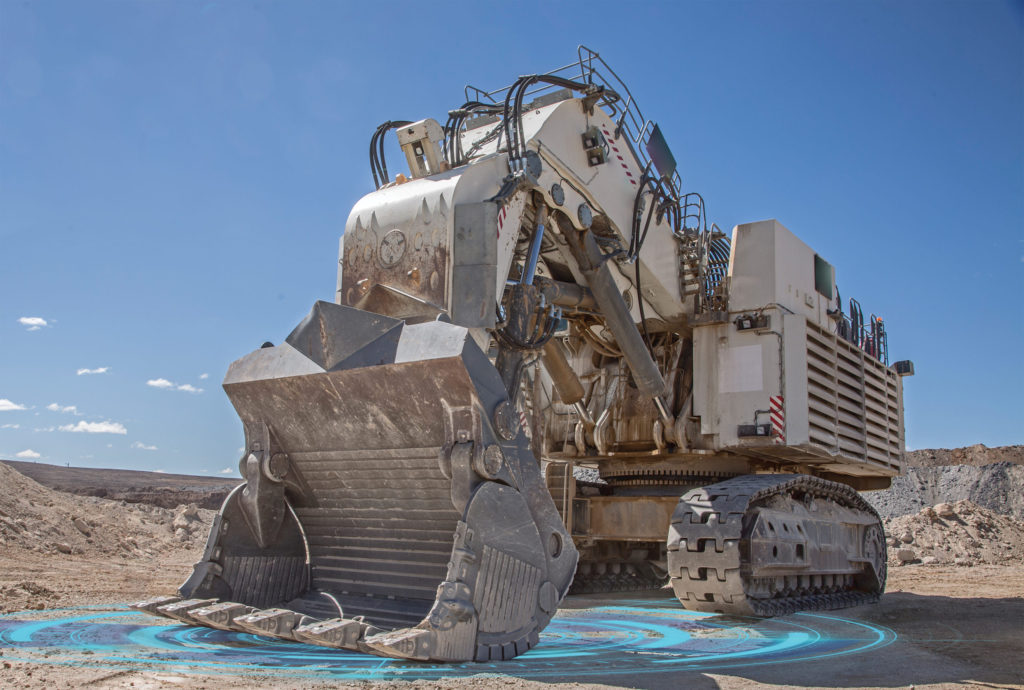JV Article: CR Mining digital GET Trakka saves bucket teeth by measuring wear


For over four decades, CR Mining has been an industry-leading manufacturer and supplier of mining equipment. From their start as innovators in the dragline bucket space, the company has leveraged that expertise to produce a suite of ground engaging tools, or GET, used in a range of machines, including excavators, wheel loaders, and rope shovels.
Now, CR Digital, the company’s technology arm, is on a mission to revolutionize the mining industry by introducing a suite of digital technologies that can be added to the cast steel teeth and shrouds attached to enormous buckets capable of scooping up tens of tonnes of ore in a single load.
“The teeth and shrouds are the wear components that protect the buckets used on all primary surface mining equipment,” says Damian Assaillit, general manager of growth and innovation with CR Digital. “That includes electric rope shovels, hydraulic excavators and shovels, wheel loaders and underground load haul dump vehicles.”

They are also “highly specialized and highly engineered products,” says Assaillit. Now, they are becoming high-tech tools with the addition of GET Trakka, sophisticated IoT sensors, which are actually installed inside the teeth, as well as the shrouds, attached to buckets.
The sensors can alert operators in near real time if the teeth or shrouds are lost or damaged. They can also relay vital information to maintenance crews as well as mine managers via Wi-Fi, 3G or 4G networks.
“GET Trakka is a really powerful tool,” says Assaillit. “We are able to count the number of scoops that the teeth have accumulated. We’re able to measure the temperature, the impacts on the teeth and the G-forces as they hit the rock. We use all of those factors to forecast the life of a tooth, which helps the maintenance team.”
Assaillit adds that: “Our technology adds to the data-driven decision making of mines of the future so that mining can be much more accurate and efficient as well as addressing issues of environmental waste and unnecessary emissions.”
The company has put digital technology into other mining equipment as well in order to enhance productivity. “We have a high precision drilling guidance and rock hardness measurement product, our Thunderbird 1110 system, that go into drill rigs,” says Assaillit. “Our Titan 3330 payload optimization system measures the payload in buckets and allows us to understand more effectively the digging performance of excavators.”
GET Trakka sensors are small devices that measure a mere 40 mm in diameter. They come encased in a proprietary shell that manages the vibrations that occur when buckets hit and lift ore. The shell also protects the sensors when temperatures plunge to well below freezing or soar to scorching.
“The sensors that we’ve developed are operating in probably the harshest environments on the planet for technology like this,” says Assaillit. “We’ve done some really clever things to deal with temperature, vibrations, power usage, and energy consumption.”

The addition of GET Trakka can lead to enhanced production and more efficient operation of enormous and costly mining equipment. It can also reduce the risks associated with damaged or lost teeth. The system comes with hand-held devices that allow operators or maintenance workers to find teeth that have come detached from a bucket.
Loss events can occur as frequently as monthly. Without such systems, teeth have wound up in load haul trucks, which then dump teeth into crushers along with hundreds of tonnes of ore. The result is a jammed crusher that has to be shut down, sometimes for three or four days. The lost production can, in turn, translate to millions of dollars in lost revenue.
But the number one issue is safety. Typically, an employee has to climb inside the crusher and use a blow torch to cut the tooth. “It’s extremely risky to recover and remove a tooth from a crusher or processing plant,” says Assaillit. “If a tooth is jammed in a crusher, you have a lot of stored energy that is ready to be released. Over the years, there have been some horrible incidents where the removal process has caused pieces of steel to be ejected with enough velocity to travel many hundreds of metres.”
The other issue is wear and tear or damage, and the life of a tooth depends on the commodity. Under optimum conditions, mining softer rock in warm weather, the teeth can last up to two months. But if they are being put to work in a hard rock mine in the middle of a Canadian winter, they may have to be replaced every six to 12 hours.
“You can keep the equipment operating at a higher performance level with a sharp tooth,” says Assaillit. “Knowing the optimal time to replace them is critical in order to avoid unscheduled downtime.”
Enhanced productivity, reduced downtime and a safer working environment are just the start of the GET Trakka revolution.
The preceding Joint Venture Article is PROMOTED CONTENT sponsored by CR Mining and produced in co-operation with Canadian Mining Journal. Visit www.CRMining.com for more information.
Comments
Robert Kriss
Re sensor survivability in Temp range. Without giving proprietary info or absolutes we should indicate Temp Ranges above and below – remember well below freezing is vague. We operate in temps down to -40 C and F.